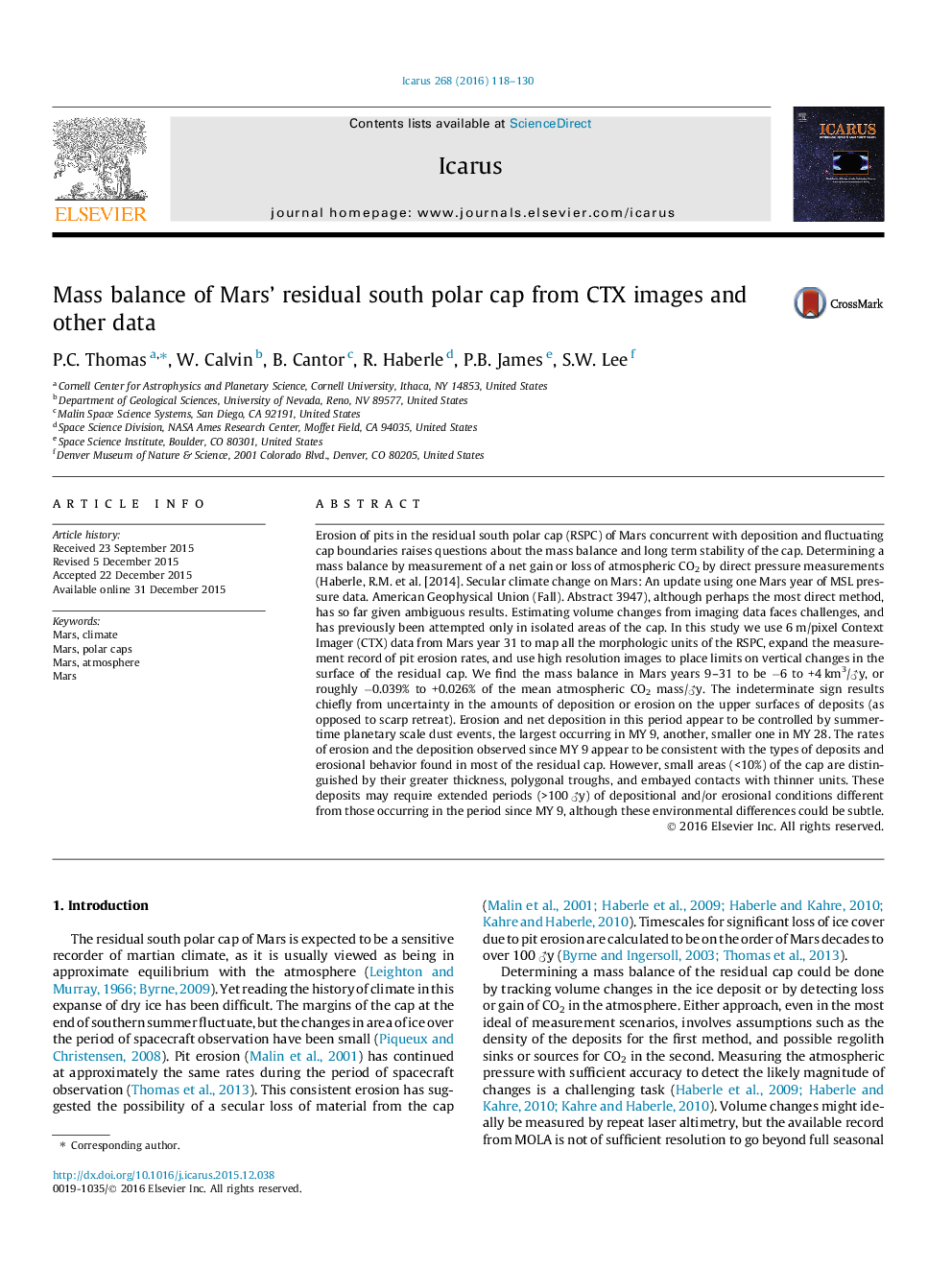| کد مقاله | کد نشریه | سال انتشار | مقاله انگلیسی | نسخه تمام متن |
|---|---|---|---|---|
| 8135577 | 1523522 | 2016 | 13 صفحه PDF | دانلود رایگان |
عنوان انگلیسی مقاله ISI
Mass balance of Mars' residual south polar cap from CTX images and other data
دانلود مقاله + سفارش ترجمه
دانلود مقاله ISI انگلیسی
رایگان برای ایرانیان
کلمات کلیدی
موضوعات مرتبط
مهندسی و علوم پایه
علوم زمین و سیارات
علوم فضا و نجوم
پیش نمایش صفحه اول مقاله

چکیده انگلیسی
Erosion of pits in the residual south polar cap (RSPC) of Mars concurrent with deposition and fluctuating cap boundaries raises questions about the mass balance and long term stability of the cap. Determining a mass balance by measurement of a net gain or loss of atmospheric CO2 by direct pressure measurements (Haberle, R.M. et al. [2014]. Secular climate change on Mars: An update using one Mars year of MSL pressure data. American Geophysical Union (Fall). 3947), although perhaps the most direct method, has so far given ambiguous results. Estimating volume changes from imaging data faces challenges, and has previously been attempted only in isolated areas of the cap. In this study we use 6Â m/pixel Context Imager (CTX) data from Mars year 31 to map all the morphologic units of the RSPC, expand the measurement record of pit erosion rates, and use high resolution images to place limits on vertical changes in the surface of the residual cap. We find the mass balance in Mars years 9-31 to be â6 to +4Â km3/ây, or roughly â0.039% to +0.026% of the mean atmospheric CO2 mass/ây. The indeterminate sign results chiefly from uncertainty in the amounts of deposition or erosion on the upper surfaces of deposits (as opposed to scarp retreat). Erosion and net deposition in this period appear to be controlled by summertime planetary scale dust events, the largest occurring in MY 9, another, smaller one in MY 28. The rates of erosion and the deposition observed since MY 9 appear to be consistent with the types of deposits and erosional behavior found in most of the residual cap. However, small areas (<10%) of the cap are distinguished by their greater thickness, polygonal troughs, and embayed contacts with thinner units. These deposits may require extended periods (>100Â ây) of depositional and/or erosional conditions different from those occurring in the period since MY 9, although these environmental differences could be subtle.
ناشر
Database: Elsevier - ScienceDirect (ساینس دایرکت)
Journal: Icarus - Volume 268, April 2016, Pages 118-130
Journal: Icarus - Volume 268, April 2016, Pages 118-130
نویسندگان
P.C. Thomas, W. Calvin, B. Cantor, R. Haberle, P.B. James, S.W. Lee,